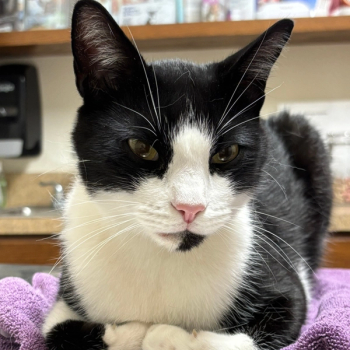
- dvm360 September 2023
- Volume 54
- Issue 9
- Pages: 38
Applications of flow cytometry in companion animal medicine
The technique is primarily used for diagnosing lymphomas, leukemias, and immune-mediated blood dyscrasias as well as future implications
Flow cytometry applications include confirming and categorizing lymphomas and leukemias,1 diagnosing cases of immune-mediated hemolytic anemia (IMHA) and immune-mediated thrombocytopenia (ITP),2 and assessing semen quality in breeding animals.3 Flow cytometry uses fluorochrome-labeled antigen-antibody complexes to identify specific cell markers associated with disease states. Canine diagnostics offer a greater repertoire of species-specific antigen-antibody complexes than feline diagnostics.1,4 Feline diagnostic capabilities continue to improve over time. In human medicine, flow cytometry has applications in immunology, molecular biology, bacteriology, virology, cancer, and infectious diseases.4
In veterinary medicine, clinicians use flow cytometry primarily in the diagnosis of lymphomas, leukemias,5 and immune-mediated blood dyscrasias. Clinicians who suspect lymphoma based on clinical examination and cytology can perform a fine-needle aspirate on an enlarged lymph node. The cell sample is squirted into a white-top tube (WTT). Then, 1 mL of sterile saline and 0.1 mL of the patient’s serum, or serum from a same-species individual, are added to the WTT. The clinician gently—so as not to generate frothing or bubbles—agitates the solution via withdrawal and reinsertion of the sample until the solution appears cloudy. The clinician sends the sample on ice overnight to a flow cytometry laboratory.2,6
Note that the type of tube may vary across different samples. A whole-blood sample in cases of suspected leukemia, abdominal fluid aspirates in cases presenting with ascites, and pleural fluid aspirates in cases presenting with pleural effusion are submitted in an EDTA lavender-top tube (LTT). A cell sample obtained with a pleural fluid in an LTT is appropriate for cases presenting with pleural effusion, and a cell sample obtained with a 21-gauge needle1 from an abdominal or thoracic mass is added to a WTT along with saline and patient serum.2,6
Once the sample containing live cells reaches the flow cytometry laboratory, it is separated into wells. The chance of an accurate diagnosis decreases if the cells have died, whether because of rough handling, poor sample preparation, or cell fragility associated with aspirates from animals on steroid medication. Next, fluorochrome-labeled antibodies, which bind to specific cell-surface or intracellular antigens, are added to the sample in each well.2 Each stained sample is then passed through a tube, and hydrodynamic focusing is performed. With hydrodynamic focusing, the stained cells flow through a tube 1 cell at a time.2 Each cell is struck with a laser beam, and optics are used to measure the scatter created when the laser strikes the fluorochrome-labeled antigen-antibody complexes.
The optics communicate with a computer program that generates a diagnostic printout. The printout is interpreted by a trained veterinary clinical pathologist, who generates a diagnostic report indicating whether the sample was identified as neoplastic or inflammatory. If the diagnosis is neoplasia, the clinical pathologist can determine the type of cancer, or the subtype of lymphoma,7 by assessing the types of markers on the cells.7 Distinct types of lymphoma can be identified. For example, high cell-surface CD21 expression on lymphocytes is indicative of B-cell lymphomas. Once the type is identified, an oncologist can determine the patient’s prognosis and the likelihood of a beneficial response to chemotherapy.
If there is doubt regarding the diagnosis, stained slides or paraffin-embedded tissue samples, which contain dead cells, can be analyzed using polymerase chain reaction for antigen receptor rearrangement (PARR) analysis. In cases in which the histopathologic characteristics of a tissue specimen are indistinct, immunohistochemical staining can be used to discern the cell type of origin (sarcoma vs carcinoma) or to differentiate B-cell vs T-cell lymphoma. Immunohistochemical staining of cell proliferation markers such as Ki67 can aid in the diagnosis of canine mast cell tumors. Many diagnostic laboratories offer diagnostic panels with a combination of immunohistochemistry, flow cytometry, and PARR analysis in cases of suspected lymphoma.6
Flow cytometry is limited by the number of cell-surface and intracellular antigens that have been identified and associated with various diseases. It is also limited by the number of antibodies that can be fluorochrome labeled and bind to said antigens.5,7,8 Canine medicine offers a more plentiful array of identifiable antigen-antibody complexes than feline medicine does. Investigators in feline medicine are working to expand the repertoire of disease-identifying antigen-antibody complexes. In feline medicine flow cytometry, PARR analysis, and immunohistochemical staining have improved diagnosticians’ abilities to differentiate between feline inflammatory bowel disease and intestinal small cell lymphoma.6,9 Flow cytometric analysis of cytological aspirates from affected mesenteric lymph nodes has improved clinicians’ ability to differentiate between these 2 common feline gastrointestinal diseases, as have immunohistochemistry and PARR analysis of intestinal biopsies.
In summary, flow cytometry is useful in the diagnosis of distinct types of lymphoma, leukemias, and immune-mediated hematological conditions such as IMHA and ITP, and it aids in semen viability assessment. As veterinary scientists discover more disease-specific cellular antigens, which can be detected with fluorochrome-labeled antibodies, clinical veterinarians will be able to use flow cytometry to diagnose more diseases.
Ann M. Brown, DVM, is a small animal veterinarian certified in veterinary medical acupuncture and diagnostic companion animal abdominal ultrasound. She is a member of the American Medical Writers Association (AMWA) and earned an Essential Skills (ES) certificate through AMWA. She is currently working toward earning the Medical Writer Certified (MWC) credential. A 1995 graduate of Michigan State University, Brown has practiced veterinary medicine for 28 years. She lives in Colorado with her husband, 2 kids, 4 dogs, and 2 snakes. A member of local fiction writing groups, she has written and published 3 novels and a novella.
References
- Martini V, Bernardi S, Marelli P, Cozzi M, Comazzi S. Flow cytometry for feline lymphoma: a retrospective study regarding pre-analytical factors possibly affecting the quality of samples. J Feline Med Surg. 2018;20(6):494-501. doi:10.1177/1098612X17717175
- Garden OA, Kidd L, Mexas AM, et al. ACVIM consensus statement on the diagnosis of immune-mediated hemolytic anemia in dogs and cats. J Vet Intern Med. 2019;33(2):313- 334. doi:10.1111/jvim.15441
- Niżański W, Partyka A, Rijsselaere T. Use of fluorescent stainings and flow cytometry for canine semen assessment. Reprod Domest Anim. 2012;47(suppl 6):215-221. doi:10.1111/rda.12048
- Riondato F, Colitti B, Rosati S, Sini F, Martini V. A method to test antibody cross-reactivity toward animal antigens for flow cytometry. Cytometry A. 2023;103(5):455-457. doi:10.1002/cyto.a.24691
- Comazzi S, Riondato F. Flow cytometry in the diagnosis of canine T-cell lymphoma. Front Vet Sci. 2021;8:600963. doi:10.3389/fvets.2021.600963
- Ehrhart EJ, Wong S, Richter K, et al. Polymerase chain reaction for antigen receptor rearrangement: benchmarking performance of a lymphoid clonality assay in diverse canine sample types. J Vet Intern Med. 2019;33(3):1392- 1402. doi:10.1111/jvim.15485
- Parys M, Bavcar S, Mellanby RJ, Argyle D, Kitamura T. Use of multi-color flow cytometry for canine immune cell characterization in cancer. PLoS One. 2023;18(3):e0279057. doi:10.1371/journal.pone.0279057
- McKinnon KM. Flow cytometry: an overview. Curr Protoc Immunol. 2018;120:5.1.1-5.1.11. doi:10.1002/cpim.40
- Avery PR, Burton J, Bromberek JL, et al. Flow cytometric characterization and clinical outcome of CD4+ T-cell lymphoma in dogs: 67 cases. J Vet Intern Med. 2014;28(2):538-546. doi:10.1111/jvim.12304
Articles in this issue
over 2 years ago
Primary bone tumors in dogsover 2 years ago
Addressing mobility in animalsover 2 years ago
dvm360® product report: PEA supplement, plus VETIGEL and moreover 2 years ago
5 things you can do right now to foster DEIover 2 years ago
The benefits and options of in-home end-of-life careover 2 years ago
An equity business partner brings pros and consover 2 years ago
Exam room upsellingNewsletter
From exam room tips to practice management insights, get trusted veterinary news delivered straight to your inbox—subscribe to dvm360.





